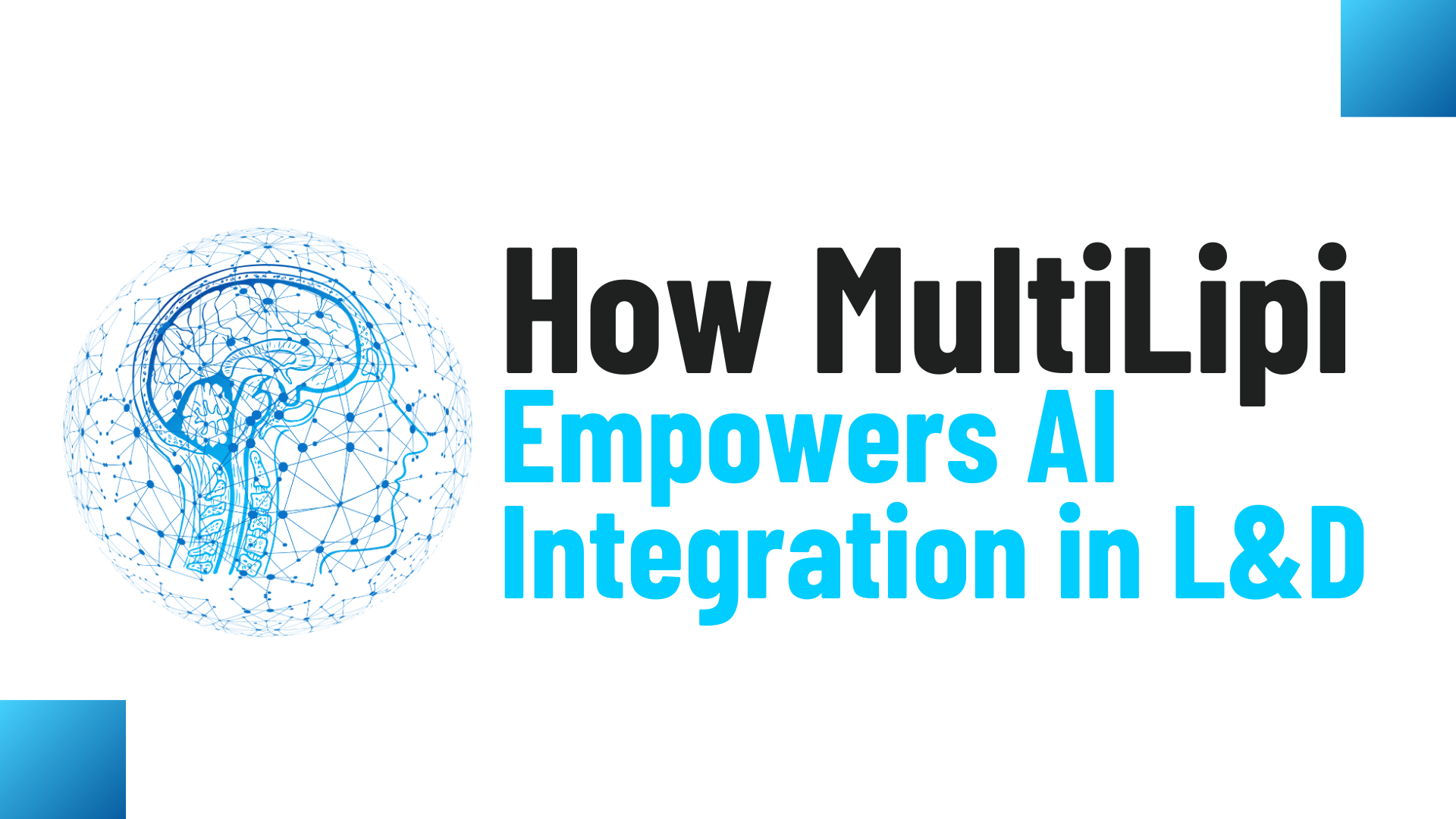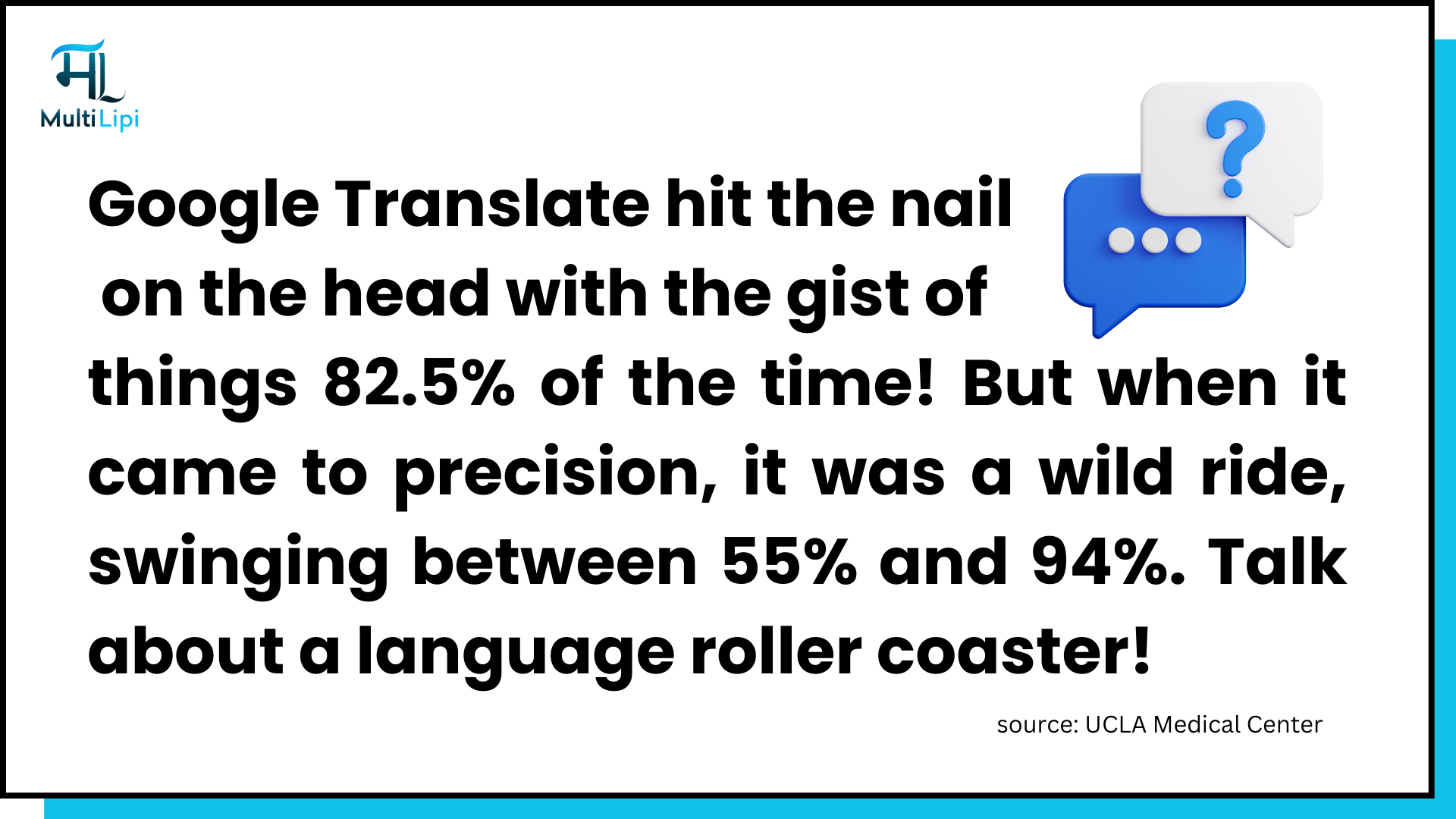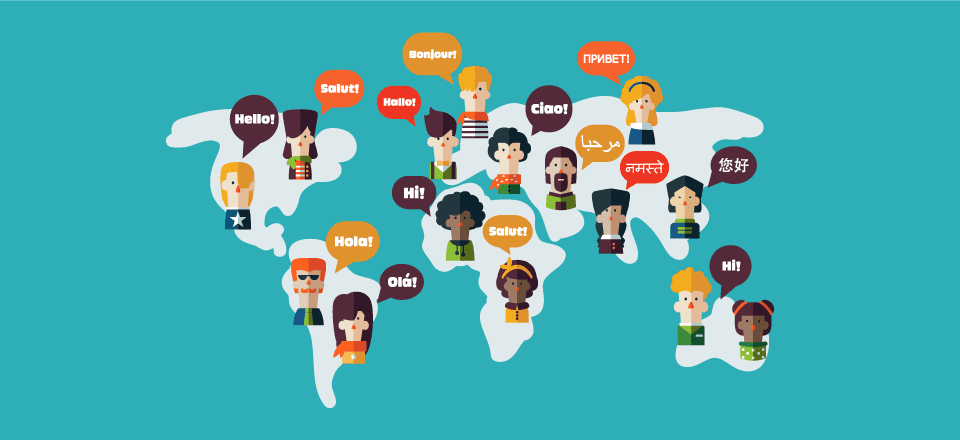Artificial intelligence (AI) tools have revolutionized industries, and their adoption is no longer optional—it's a necessity. With advancements in AI-powered functionalities, businesses are finding innovative ways to automate, analyze, and enhance their workflows. From customer service to content creation, AI is driving efficiency, productivity, and global reach.
In this blog, we’ll explore the 9 best AI tools for businesses, discuss the transformative benefits of AI, and outline best practices for seamless implementation. Plus, we’ll demonstrate how MultiLipi is leading the way in multilingual content solutions, empowering businesses to thrive in global markets.
5 Key Takeaways from This Article
AI is reshaping business operations: AI tools streamline processes, automate tasks, and provide actionable insights, enabling businesses to operate more efficiently and effectively.
Tailored solutions for diverse needs: From chatbots to project management platforms, AI caters to various business challenges, offering tools like MultiLipi for seamless multilingual content management.
Multilingual content made simple: MultiLipi stands out with its robust features, including AI translation, glossary management, and real-time SEO optimization, supporting businesses in expanding their global footprint.
Benefits for businesses of all sizes: AI tools reduce costs, save time, enhance customer personalization, and enable scalability, making them essential for startups and enterprises alike.
Best practices for AI adoption: Define clear goals, compare features and pricing, and invest in team training to unlock the full potential of AI in your workflows.
What Are the Different Types of AI Tools for Businesses?
AI tools cater to various needs, enhancing productivity, efficiency, and innovation. Here’s an overview of AI-powered solutions available:
Chatbots: Enhance customer support and automate interactions.
Content Generators: Quickly create high-quality written content.
Video Creation Tools: Simplify video production with AI-enhanced features.
Image Generators: Design visuals, logos, and graphics effortlessly.
Project Management Platforms: Optimize task tracking and team collaboration.
AI Tools for Every Business Need
1. Chatbots
AI chatbots mimic human conversations, making customer interactions more engaging and efficient. They provide:
Instant query resolution
Round-the-clock support
Valuable user insights for data-driven decision-making
By integrating chatbots, businesses can reduce operational costs, enhance user experience, and scale customer engagement effortlessly.
2. Content Creation and Translation
Tools like MultiLipi redefine content creation and translation, enabling businesses to:
Generate high-quality content (e.g., blogs, social media posts, marketing materials).
Translate materials into multiple languages for global reach.
Maintain consistency across all branding efforts using AI-driven glossaries and translation memories.
3. Video Creation
AI video tools like Synthesia and InVideo streamline video production, offering:
Automated scriptwriting and editing
Customizable templates
Voiceovers and subtitling
These tools empower businesses to produce professional-grade videos efficiently, improving marketing efforts and engagement.
4. Image Generation
AI image generation tools create stunning visuals tailored to a brand’s identity. Features include:
Custom graphic design
Logo creation
Consistent branding across platforms
5. Project Management and Productivity
Tools like ClickUp and Notion AI automate administrative tasks and optimize team collaboration through:
Task scheduling and progress tracking
Predictive analytics for improved planning
Customizable workflows for diverse projects
Benefits of AI Tools for Businesses
Cost Efficiency
AI reduces reliance on manual labor by automating repetitive tasks, saving costs on staffing and operations.
Time Savings
AI-powered automation frees up employees to focus on strategic initiatives, boosting productivity and innovation.
Enhanced Customer Support
Chatbots and virtual assistants enable 24/7 support, ensuring customers receive prompt assistance and boosting satisfaction.
Data-Driven Insights
AI analyzes vast datasets to uncover trends and patterns, enabling businesses to make informed decisions and enhance performance.
Personalized Experiences
AI delivers tailored marketing campaigns and product recommendations, fostering customer loyalty and increasing conversions.
Scalability
AI solutions easily adapt to growing business demands, handling increased workloads without additional resources.
Top AI Tools for Businesses in 2025
MultiLipi: The ultimate solution for multilingual content creation, offering AI-powered translation, glossary management, and SEO optimization to support global business expansion.
Claude: Advanced language model for large-scale text analysis, delivering safer, context-aware outputs.
Midjourney: Generative AI for unique visual content creation.
Adobe Generative Fill: Intuitive AI image editing for seamless design enhancements.
Notion AI: Productivity tool for summarizing texts, generating content, and streamlining workflows.
Grammarly: Writing assistant for error-free, polished communication.
ClickUp: Project management tool for task automation and collaboration.
Buffer: Social media management platform for streamlined campaign planning.
HubSpot: Comprehensive CRM and marketing automation solution.
MultiLipi MultiLipi is an all-in-one translation and localization platform. It leverages AI to streamline, manage, and enhance the content translation process. MultiLipi is designed to ensure accurate, consistent, and culturally relevant multilingual content creation, making it ideal for businesses of all sizes, language service providers, and translation teams.
The comprehensive AI-powered platform offers an extensive range of features. Here are some of the highlights:
Translation automation
AI-powered sourcing and matching of expert linguists
Collaborative workspace
Marketplace of professional translators
Project management tools
Automated workflows
Multilingual content management
MultiLipi’s AI-driven translation tools enable content to be translated into any language within seconds, regardless of format. The platform also supports content creation, enabling teams to produce multilingual materials efficiently.
A standout feature of MultiLipi is its AI-powered embedded marketplace, which connects businesses with linguists, translators, and editors. The intelligent matching algorithm ensures that the right professional is selected for every project.
MultiLipi’s solutions simplify the translation and content generation process, helping organizations save time and resources while ensuring quality and consistency across all materials.
Claude Rivalling ChatGPT is Claude, an advanced large language model created by a former employee of OpenAI. It’s available in-browser and via API. Compared with ChatGPT, Claude has greater input and output capacity and promises more enhanced performance.
For example, thanks to its large context window, users can upload hundreds of pages of documents at a time. The tool then analyzes this text to provide valuable strategic insights, generate copy for different purposes, or offer targeted and informed customer support.
A big advantage of using Claude over its competitors is the promise of safer text-based outputs. The tool’s creators have placed a strong emphasis on the ethical use of AI. This results in chat responses that are less biased, more cautious, and better aware of context. This is in part thanks to the language model being fine-tuned using human feedback.
Here are some of the tool’s core features:
Content generation such as social media posts, marketing materials, and articles
Generating code in popular programming languages to build websites and apps or fix and explain errors in existing code
Summarizing, analyzing, and reporting on data. The tool can even create a SWOT analysis to help guide your next steps.
The main benefit of Claude is the quantity of text the tool can process and work with safely. Users can input a maximum of 100K tokens with each query. This can equate to as much as a book. With the brand's focus on safety, users can be sure of generating accurate, unbiased results in large quantities.
Midjourney Generative AI program Midjourney creates images based on human natural language descriptions and inputs, transforming the way businesses approach visual content creation. The tool is popular with teams as it generates unique visual assets that align with user preferences.
The advantages of this tool are manifold. Not only does prompt-based AI content generation streamline the creative process and save time, but it also enables brands to move away from a reliance on stock images. This helps them better define their visual identities while freeing up time to focus on higher-level tasks.
The tool is collaborative and highly flexible, enabling users to explore a wide range of different artistic styles. The software facilitates work sharing, feedback collection, and team collaboration within an interactive and highly innovative environment.
Adobe Photoshop Generative Fill Adobe Photoshop Generative Fill is a powerful generative AI tool powered by Adobe Firefly. It enables users to seamlessly add, remove, and modify specific elements within images using simple text prompts. This revolutionary design feature leverages AI to support and enhance the creative abilities of designers and artists.
The tool works by analyzing the context of the pixels surrounding the chosen element. It then generates new content that naturally complements the existing image. As well as fostering experimentation during the creative process, the tool enables individuals and teams to realize more complex design ideas. This is achievable without extensive technical know-how or the need for time-consuming manual input.
Here are some examples of what the tool can do with your images:
Adding or removing content from a scene
Replacing a background
Removing unwanted elements
For businesses, Adobe Photoshop Generative Fill is ideal for teams collaborating on visual ideas and assets. The intuitive nature of the tool enables fast iteration, idea sharing, and teamwork. It also enables non-designers to work easily on visual assets, saving time and resources.
As companies recognize the value of using tailored visuals in marketing campaigns, tools like Generative Fill are likely to play an increasingly important role.
Notion AI Popular project management tool, Notion, launched Notion AI in early 2023, to help users save time and boost efficiency through natural language processing and machine learning. The highly versatile tool works well for a wide range of content-related tasks. Its core capabilities include the following:
Summarizing long texts
Generating blog post structures and emails
Creating action items from notes
Translating text into multiple languages
Finding synonyms and antonyms
Checking grammar and spelling
Writing content
Integrating seamlessly into the Notion workspace, Notion AI boosts productivity by streamlining a team’s workflows and automating routine content creation and organizational tasks. With Notion AI taking over these processes, users can spend their time on higher-level, more creative tasks.
The tool also supports team collaboration, organization-wide knowledge-sharing efforts, and access to information through knowledge bases. It also summarizes large documents, helping team members stay aligned and informed on products, projects, and internal processes.
Grammarly Grammarly is an AI-powered writing assistant that supports individuals and businesses in perfecting their written output. Working with English texts, the tool detects errors in spelling, grammar, punctuation, clarity, and style, making helpful suggestions to improve the language.
The tool also addresses consistency in brand voice across different materials, from emails to reports. With its plagiarism detection and citation support, it has everything users need to make their documents more professional.
Grammarly integrates seamlessly with other platforms such as web browsers and word processors. This ensures users of all knowledge levels and experience can work with it.
More advanced features of the tool include tone detection and suggestions to improve a text’s clarity. These help users tailor their content to meet the needs of specific audiences. Finally, the tool also fosters team collaboration with its shared feedback and editing features. This helps teams to work together to produce copy that meets all business and audience needs.
ClickUp ClickUp is a project management tool that supports teams in streamlining workflows and boosting productivity.
It offers a wide range of features such as task management, time tracking, collaboration, automation, and predictive tools. Users can tailor their workspaces to match their preferences, needs, and priorities. In addition, they can effortlessly customize elements such as task creation, checklists, and workflows.
ClickUp’s assistance with time management is particularly beneficial as the technology can predict the duration of tasks. This helps teams stay on track, manage expectations, prioritize tasks, and better allocate staff and resources.
ClickUp works well with other tools and is simple to integrate, enabling easy file-sharing across teams and channels. Slack, Google Drive, and Zoom are just some of the platforms that ClickUp integrates with. The platform’s UI design is both intuitive and flexible. This makes it suitable for tech newbies and more experienced project managers at small startups and larger corporations alike.
Buffer Supporting teams with social media management, Buffer helps organizations grow their online presence across social media channels. Users can schedule posts ahead of time, create and queue posts, set publishing times, and track and analyze the performance of each post.
The tool also supports the day-to-day planning and content creation required to succeed on social media. This is in addition to advanced tools to analyze content, track key metrics, and boost engagement.
Top tools and features in the Buffer suite:
Post scheduling
Multi-platform management
Content calendar
Analytics and reporting
Multiple user collaboration
First comment scheduling on Instagram
Customized posts for different platforms
HubSpot HubSpot is the complete marketing, sales, and customer service platform. Offering marketing automation, content management, CRM, lead generation, and customer service support, the platform provides a comprehensive service for the entire customer journey.
HubSpot is a popular choice among businesses thanks to its easy-to-use interface and powerful analytics tools. This is ideal for those looking to grow their output and optimize resources.
HubSpot is perhaps best known for its robust CRM. This completely free feature enables businesses to intricately track any interactions between leads and customers, offering a sophisticated analysis of the sales pipeline. Other key features of the tool include the following:
Marketing tools for email
Social media management
Content creation
SEO optimization
Landing page creation
Automated email sequencing
Lead scoring
Customer service help desk
Live chat
Streamlining and alignment of all marketing, sales, and customer service efforts
HubSpot leverages AI technology to boost the efficiency and effectiveness of the platform for users. Predictive lead scoring is one of its most popular AI-powered features. It uses machine learning algorithms to analyze data that in turn helps teams prioritize leads and boost conversion rates.
Content creation, personalized recommendations, smart chatbots, data gathering, analytics, scheduling, and customer insights are other areas where the platform helps businesses reach wider audiences. This improves efficiency and supports data-driven decisions.
Best Practices for AI Adoption
1. Define Goals
Identify areas where AI can make the most impact, such as automating routine tasks or enhancing customer interactions.
2. Compare Features and Costs
Evaluate tools based on your business needs and budget. Prioritize scalability and integration capabilities.
3. Train Your Team
Invest in team training to ensure smooth onboarding and maximize the benefits of AI.
AI tools are revolutionizing how businesses operate, enabling teams to work smarter and achieve their goals faster. MultiLipi leads the way with advanced multilingual content solutions, empowering organizations to break language barriers and connect with global audiences effectively.
Ready to transform your business with AI? Learn more about MultiLipi’s cutting-edge solutions and get started today!

























